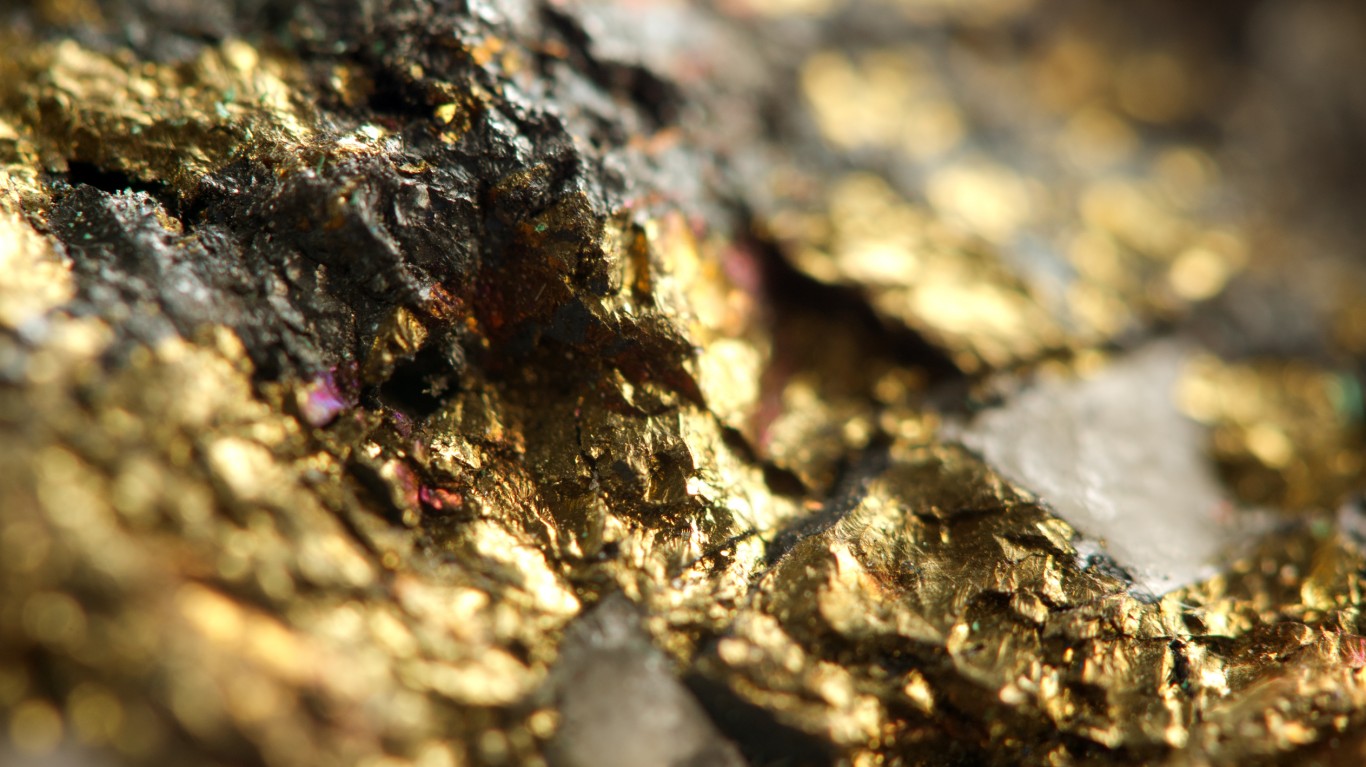Commodities & Metals
Gold ETFs Smash All Records for Inflows in the 2020 Market Turmoil

Published:

While stocks were incredibly volatile in the first quarter of 2020 as the instant recession from COVID-19 took over, the asset that thrived and attracted investors was gold. After all, gold is perhaps the greatest hedge against uncertainty. It also turns out that the Federal Reserve’s efforts to go back to the zero-interest policy while printing $2.2 trillion to keep the economy going is another big boost for gold.
Investors around the globe poured a record amount into gold-backed exchange-traded funds (ETFs) and exchange-traded products during the first quarter of 2020. The pandemic drove the interest as financial markets went into a panic.
The World Gold Council announced on Wednesday that inflows into gold ETFs rose by 5%, 151 tonnes or $8.1 billion, in March. It was not just the United States driving gold. The European Union was an even worse hot spot of the coronavirus in March, and European funds had the largest interest in gold ETFs.
According to the World Gold Council’s review for the first quarter of 2020, global gold-backed ETFs and similar products added 298 tonnes, with net inflows of $23 billion globally. On top of being the largest quarterly amount ever in absolute terms in U.S. dollars, this was the single largest quarterly gain in tonnes since 2016.
Over the past year, gold ETFs added 659 tonnes, and that was said to mark the highest amount on a rolling annual basis going back to the global financial crisis. At the same time, ETF and equivalent assets under management rose 57%.
By the end of March, gold ETFs combined had an all-time high of 3,185 tonnes. Also worth noting was that trading volumes in those ETFs and the assets under management reached record highs. The World Gold Council said:
Gold prices denominated in many other currencies, however, continued to reach all-time highs although the price in US dollars remained 15% below its 2011 high. This highlights a continued trend of growth in gold ETFs outside of the US over the past few years; a trend underscored by European funds seeing the largest absolute inflows and Asia and other regions registering the largest percentage growth during the month.
The regional data showed where the largest interest was:
One interesting aspect of gold, despite the record inflows, was that the price of gold did not surge in March. Many investors were forced to or decided to lock in gains to raise liquidity when the broader economies and stock markets were in panic. Many individuals were also in cash-raising mode.
As for comparing the economy of today to the 2008 to 2009 financial crisis, the World Gold Council said:
When stocks sold off sharply in 2008 gold experienced a few pullbacks, falling more than 30% from peak to trough but rallied back to close 4% higher on the year. What followed was the initial Quantitative Easing (QE) program in the US, along with similar monetary policy interventions worldwide, which propelled gold over 600% higher at its peak in September 2011. Other drivers included: higher risk, particularly in the European region, gold’s store of value quality coming to the fore and an improved opportunity cost in the face of lower rates. In the three months leading up to the September 2008 Lehman Brothers bankruptcy, gold-backed ETF flows were relatively unchanged. Following the QE announcement, gold ETFs added 146 tonnes, or 15% to their holdings over the next two weeks and a total of 235 tonnes, or 24% to their holdings through the end of 2008, with an additional 1,296 tonnes, or 107% in the following three years.
24/7 Wall St. wanted to check on the U.S. gold ETFs for their current size that included data even more recently than the end of the first quarter of 2020.
The SPDR Gold Shares (NYSEARCA: GLD) is the largest gold ETF of them all. As of the April 7, 2020 close, its $52.26 billion in assets was still about 150% larger than the iShares Gold Trust (NYSEARCA: IAU), with its $20.9 billion in assets. The difference here is that the SPDR ETF has a 0.40% expense ratio, versus 0.25% for the iShares ETF. According to the ETFdb.com portal on gold ETFs, the remaining 16 gold themed ETFs trading in the United States covering the metal (not the miners) had less than $4 billion in total combined assets.
The last few years made people forget how much banks and CD’s can pay. Meanwhile, interest rates have spiked and many can afford to pay you much more, but most are keeping yields low and hoping you won’t notice.
But there is good news. To win qualified customers, some accounts are paying almost 10x the national average! That’s an incredible way to keep your money safe and earn more at the same time. Our top pick for high yield savings accounts includes other benefits as well. You can earn up to 3.80% with a Checking & Savings Account today Sign up and get up to $300 with direct deposit. No account fees. FDIC Insured.
Click here to see how much more you could be earning on your savings today. It takes just a few minutes to open an account to make your money work for you.
Thank you for reading! Have some feedback for us?
Contact the 24/7 Wall St. editorial team.